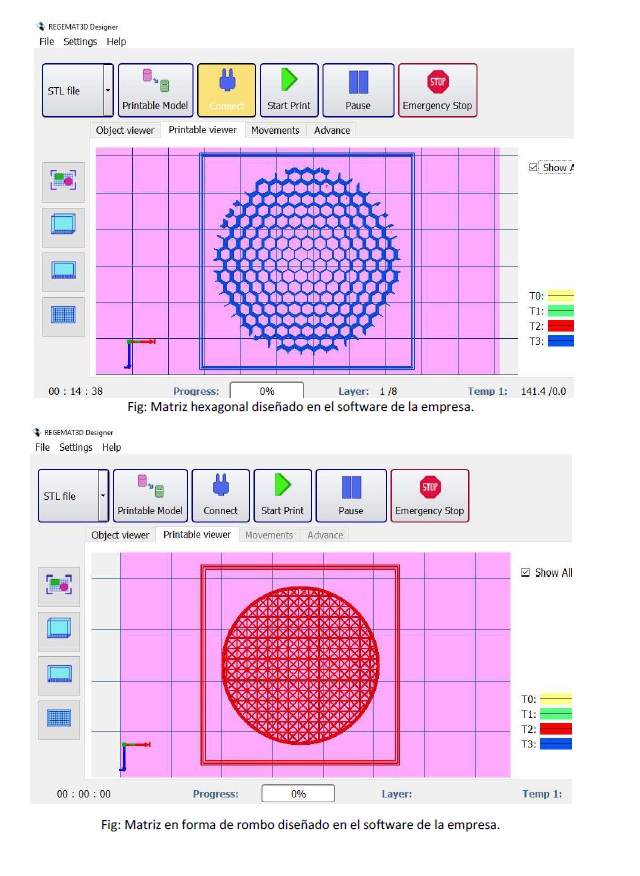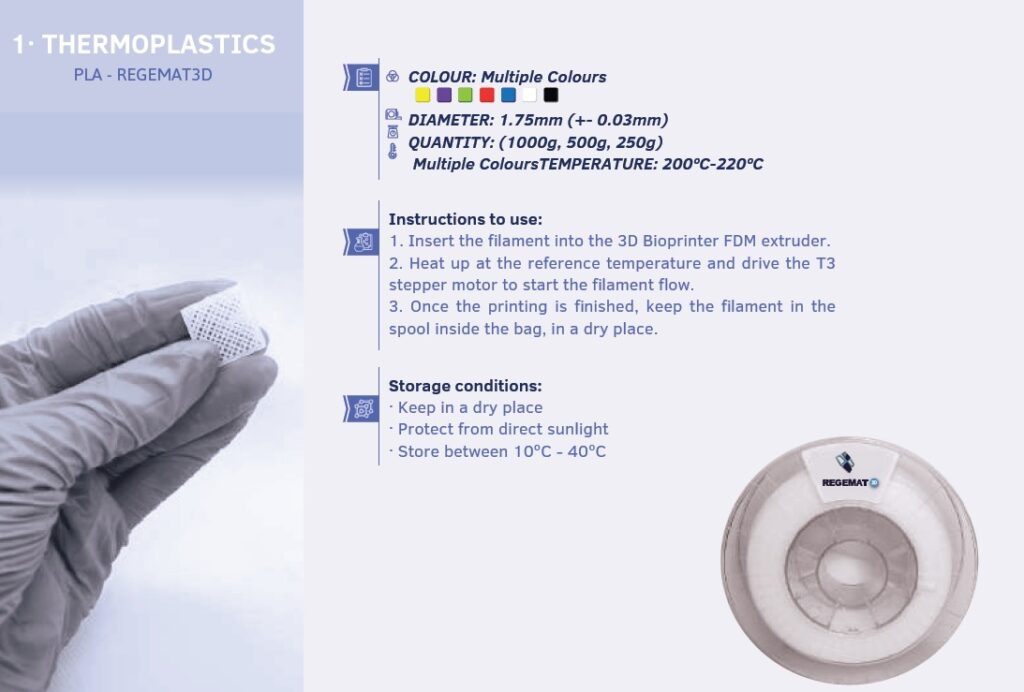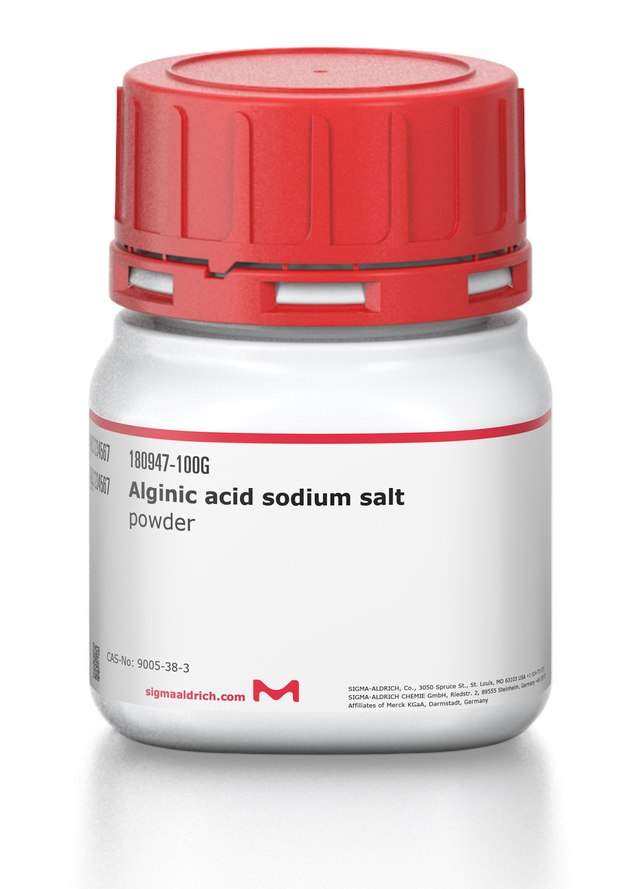In recent years, the development and use of biomaterials has undergone a great advance because they have made it possible to improve people’s life expectancy, improve surgical techniques and, on the other hand, successfully develop implants and medical devices capable of working properly in contact with tissues of the human body. Regulatory approved thermoplastics as PLA are very interesting candidates to bring new solutions to the clinical applications. Cell encapsulation and deposition can be easily achieved using hydrogels as Alginate.
The present method aims to design and manufacture a scaffold with a synthetic polymer (PLA) together with a hydrogel synthesized from alginate of sodium, for subsequent application in tissue regeneration. The biofabrication technique comprises two processes, first, the fused deposition of the PLA to obtain the scaffold and second, the injection of the alginate to fill the printed scaffold.
Firstly, commercial non-medical grade PLA (1.75 mm filament) is used and it was melted at 210 ºC in a nozzle extruder and deposited, at rate of 1.4 mm/s, in a layer-by- layer manner to generate a previously designed matrix (using a G-Code generator as the REGEMAT3D Designer, see picture below). After printing the scaffold, the structure is filled with sodium alginate containing cells using a syringe head. After that a second syringe containing CaCl2 fills the matrix gelifying the hydrogel and attaching the cells to the PCL structure.
Finally, all cell-laden scaffolds are cultured in medium, as previously described, at 37ºC in 5% CO2 atmosphere.



Instructions to use PLA:
1. Insert the filament into the 3D Bioprinter FDM extruder.
2. Heat up at the reference temperature and drive the T3
stepper motor to start the filament flow.
3. Once the printing is finished, keep the filament in the
spool inside the bag, in a dry place.
Storage conditions PLA:
· Keep in a dry place
· Protect from direct sunlight
· Store between 10ºC – 40ºC
PRODUCT OVERVIEW Alginate
Sodium alginate is the sodium salt of alginic acid, a natural polysaccharide found in brown algae. It is generally used as a stabilizer and thickener in the food industry. Sodium alginate may undergo cross-linking in the presence of divalent cations such as Ca2+ to form biodegradable stable gels, which finds applications as a material for cell encapsulation and immobilization. PRODUCT FEATURES Sodium alginate is a naturally derived biomaterial that can be chemically crosslinked with calcium chloride to create cell-laden hydrogels. These reagents are used in a variety of applications including bioprinting. The recommended preparation yields a streamlined matrix bioink that supports 3D printed cell-laden constructs. Soluble in common solvents (THF, Chloroform, diH20). Upgraded thermal stability (very stable until 250ºC). Rapid crystallization from melt and proper processing with thermoplastic techniques (T > 100ºC). They may content bismuth residues but in vitro compatibility studies demonstrated that these materials are not cytotoxic and provide a valid substrate for cells to attach and proliferate. STORAGE AND HANDLING Keep container tightly closed in a dry and well-ventilated place and Sodium Alginate should be stored between 5ºC and 8ºC in an airtight container. For research use only. Not for human use. Sodium alginate has powder form.
| Number | Category | Product | Amount |
|---|---|---|---|
| 1 | Biomaterials | PLA standard-250 gram | 1 |
| 2 | Others | PBS - 100 ml | 1 |
| 3 | - | sodium alginate powder | 1 |
| 4 | - | CaCl2 | 1 |

One thought on “3D Printing of PLA-Alginate scaffolds for tissue engineering”
Nice work as part of the Dissertation “Biopolymers and 3D bioprinting of scaffolds in tissue engineering”| Biopolímeros y bioimpresión 3D para scaffolds en ingeniería tisular.